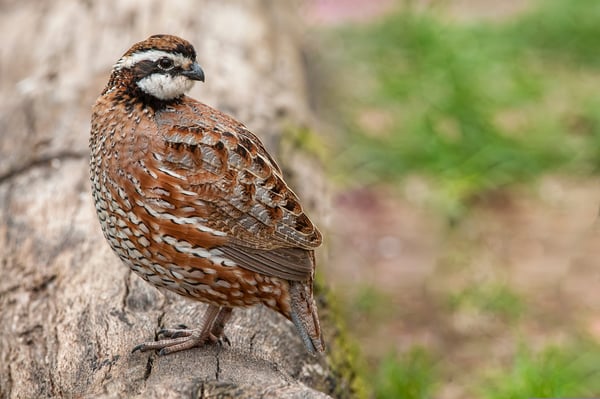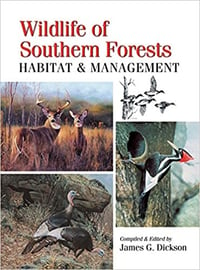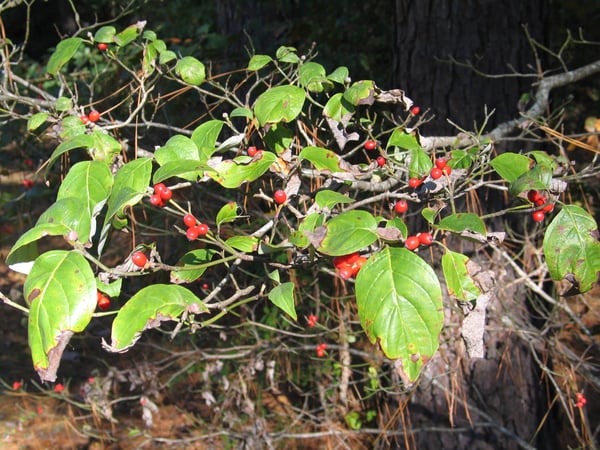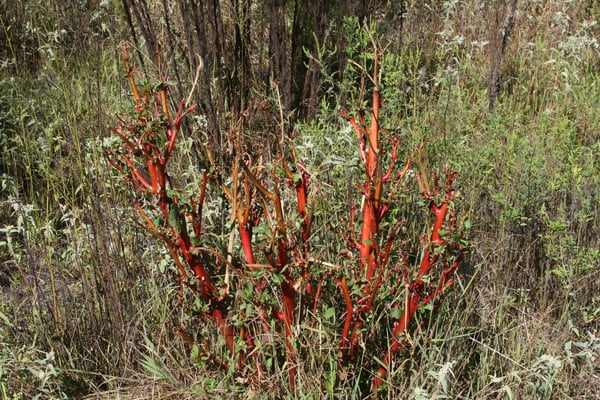With World Animal Day happening on October 4th, it gives us a chance to think about the animals in our lives, including the wildlife. Humans and wild animals have a unique relationship that goes back eons and continues today, albeit modified.
Most family forest landowners are interested in wildlife on their land. Research on the objectives of small private landowners support this idea. In this post I offer some tips on how you can manage your land to make it more suitable for wildlife habitat. I feature several game species, white-tailed deer and wild turkeys, as well as some non-game bird communities.
Step One: Figure Out What You Want
To do this, you’ll need to decide on an objective. Then you can determine how feasible it is to get what you want, as well as the best way to get there.
The biggest question to ask yourself is, how will habitat manipulations benefit your target populations? In some cases, the impact might be minimal, whereas in others you will see real results.
For example, white-tailed deer are very widespread, so increasing habitat quality will usually benefit deer.
On the other hand, northern bobwhites (quail) populations have suffered throughout their native range across eastern North America. They are relegated to large tracts of early successional habitat, that is maintained by disturbance such as fire. If you don’t currently have quail on your property, habitat management targeting quail probably won’t yield results.

Northern bobwhite quail
Many song bird species are associated with specific types of habitat, and respond well to habitat changes.
For more detail on these and other common species, see the final section of this post below.
Step Two: Take Stock of What you Have
Once you’ve identified a target species or suite of species, the next step is to determine the path of least resistance to get to improved habitat conditions. Here are a few questions to ask yourself before planning any work on your woodland.
- What’s already working? In most cases, you’ll want to protect and manage what you already have on your woodland. For example, the acorns produced by oak trees are consumed by over one hundred different wildlife species. Do your best to protect these naturally occurring sources of food and shelter.
- What’s currently limiting? Imagine your habitat as a wooden bucket with vertical wooden slats, and the water you pour into the bucket as habitat quality. The quality will only increase to the level of the water in the bucket. And the water only rises to the level of the shortest slat. That represents what’s limiting your habitat quality. For example, the best fall and winter habitat for wild turkey is mature hardwoods or pine hardwoods. Meanwhile, young turkey poults need insects provided in young grass-forb habitat. This level of diversity is not always found within turkey range, and can therefore impact habitat quality.
- What’s the Best Bang for Your Buck? (I’m talking habitat results, not rifles!) Sometimes just a little tweaking yields good results. Use what is natural and suited as much as you can. You don’t have to start from bare ground. Don’t bulldoze your native hardwoods to plant sawtooth oak!
Step Three: Do Your Research

The internet may be a great source of generic advice, as well as books on managing your woodland for wildlife. For instance, Wildlife of Southern Forests: Habitat and Management, a book I produced and co-wrote.
Below are some examples of the types of guidelines you can find online, and follow to enhance habitat conditions. In this case, we’re looking at managing pine plantations, a common forest type in the southeast. For advice specific to your region, I recommend starting with your state forestry or wildlife agency’s website, which can be a good source of information and resources.
Pine Plantation Management:
- Streamside zones are strips of mature hardwoods in riparian areas. Maintain and protect these and any hardwood corridors.
- Staggering harvests over several years, and also planting in stages, will increase overall habitat diversity. Wider spacing of planted seedlings allows a longer time for the wildlife food plants to persist in a stand.
- The worst stage of a pine plantation for wildlife is after about 10 years old before the first thinning, so thin as soon as you can. This will open up the stand to sunlight, and increases grass-forb and shrub growth and fruiting.
- Once your pines get about 6-7 inches in diameter, begin burning every 2 or 3 years. Burning sets back succession and improves habitat quality.

Thinning a pine plantation allows sunlight into the stand, which increases flowering and fruiting of midstory trees such as this flowering dogwood.
Step Four: Create a Plan (with a Professional)
While it’s tempting to get right down to business, it’s important to think ahead to 10, 15, even 20 years down the road and how the actions you take on your land will impact the long term health of your forest. Before you begin any management activities on your land, I recommend meeting with a professional forester to discuss your options and devise a plan.
For landowners in California, Wisconsin, Pennsylvania, Alabama, Florida and South Carolina, WoodsCamp is currently matching qualifying landowners with free forester visits to assist with this step. Click here to learn if your woodland is eligible.
One Last Thing...
Before you go, I wanted to provide a bit more information on ideal habitat conditions for some common species/communities. Enjoy!
Deer
Deer are primarily browsers. Habitat variety with ample young stands with browse is good. There are many native plants that deer relish, including: greenbriar, honeysuckle, yellow jasmine, blackberry, dewberry, pokeweed (shown here,) and several others. Periodic shredding or burning every few years will keep these within reach of deer. Deer also consume other plant matter such as mushrooms, forbs, and acorns from mature stands.

Pokeweed, a preferred deer browse in late summer
Wild Turkeys
The best habitat for turkeys is a mixture of mature woods and openings. These are the turkey’s two primary habitat components. As mentioned above, the best fall and winter range is mature hardwoods or pine-hardwoods, but the best brood range for young poults is short grass-forb vegetation. If not managed to maintain this stage of succession, the grass-forb habitat soon succeeds to a thicker brush, which is okay for deer, but not suitable for turkeys.
Shrub-associated birds
There is a suite of bird species associated with short, shrub-stage vegetation. Maintaining this habitat usually benefits these bird species, which include: yellow-breasted chats, indigo buntings, prairie warblers, and northern cardinals.
.jpg?width=600&name=Cardinal%20(F).jpg)
Canopy dwelling birds
This suite of birds is associated with tree canopies. Mature stands often include these species, such as: the tufted titmouse, red-eyed vireo, yellow-billed cuckoo, and the tanagers.
I hope this information allows you to do what you can on your land to make your wildlife habitat better, and enjoy the wildlife populations we have today!
About the Author: Dr. James G. Dickson is an award-winning author, researcher, wildlife biologist, and professor. He, with help from colleagues, produced comprehensive and award-winning books on: Wildlife of Southern Forests: Biology and Management, and The Wild Turkey: Biology and Management, called the turkey bible. He is Scientist Emeritus, USDA Forest Service, Southern Research Station. Email him at jgdickson14@gmail.com
*This post was written by guest blogger. The views within it do not necessarily represent those of WoodsCamp Technologies or the American Forest Foundation.


We want to hear from you.